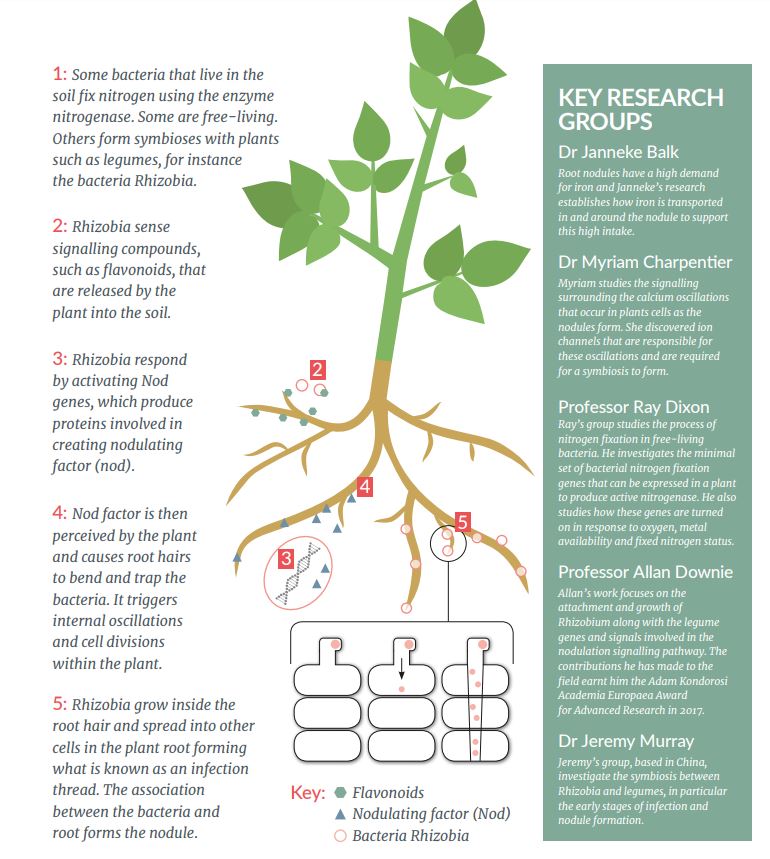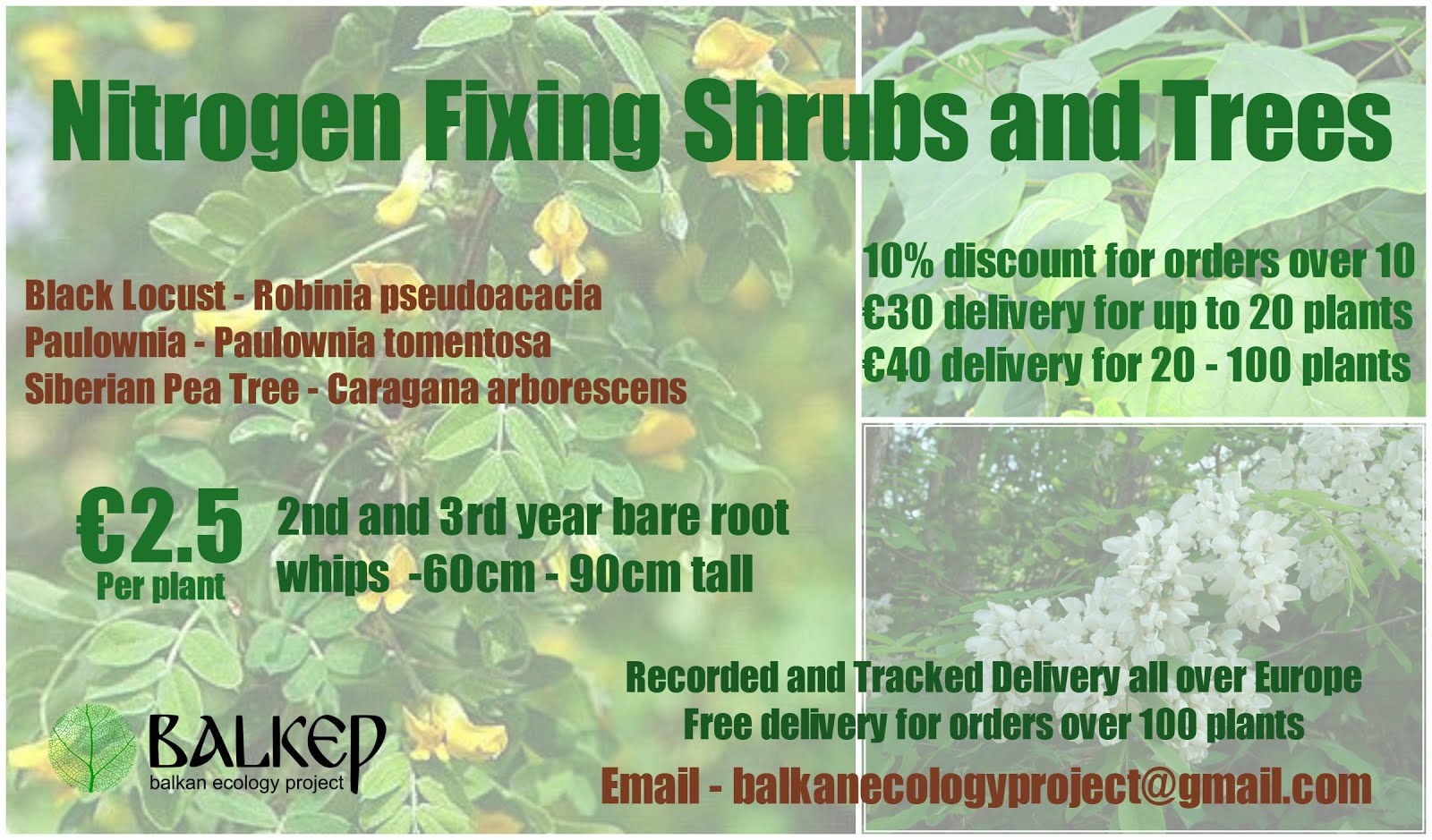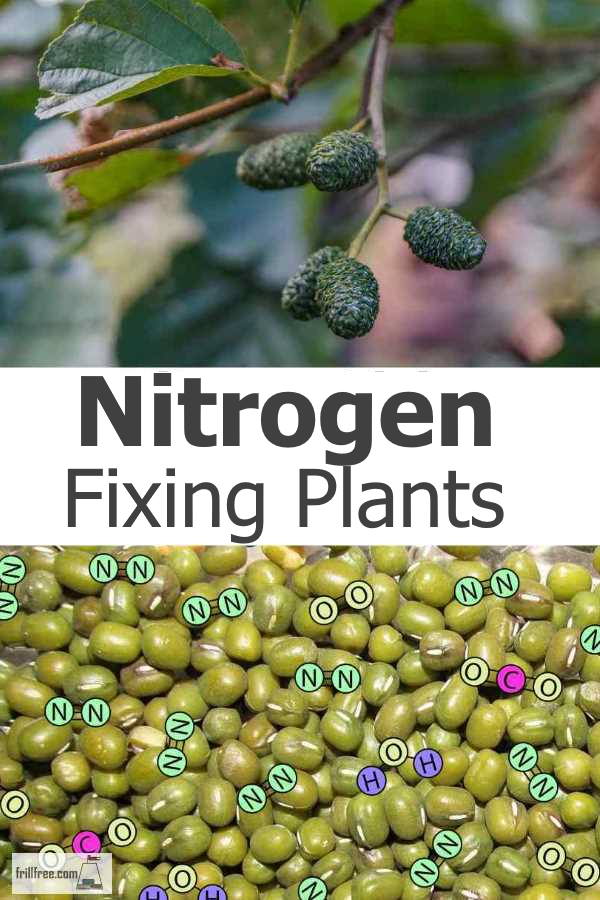Your Nitrogen fixing plants list images are ready in this website. Nitrogen fixing plants list are a topic that is being searched for and liked by netizens now. You can Find and Download the Nitrogen fixing plants list files here. Get all free images.
If you’re looking for nitrogen fixing plants list pictures information connected with to the nitrogen fixing plants list topic, you have pay a visit to the ideal site. Our site frequently gives you hints for seeing the highest quality video and image content, please kindly hunt and locate more enlightening video content and graphics that fit your interests.
Nitrogen Fixing Plants List. The most commonly used nitrogen fixers are clover, beans, peas and lupins. Three consecutive years of shoot destruction may kill all plants affected. Herbaceous nitrogen fixing plants can also be another layer within a fruit tree guild or forest garden. Legumes (beans, peas, indigo, lupine, peashrub, vetch, alfalfa, clover practicalplants.org is a wiki based site that hopes to create a huge database of plants, and their functionality in a permaculture system.
 listofnitrogenfixingplants Nitrogen fixing plants From pinterest.com
listofnitrogenfixingplants Nitrogen fixing plants From pinterest.com
When they die or leaves fall to the ground. Bacteria of this genus form root nodules. We plant twice per year, once in spring, and again in october. Herbaceous nitrogen fixing plants can also be another layer within a fruit tree guild or forest garden. They then turn it in to plant available nitrogen. List of plants that fix nitrogen there are numerous plants that fix nitrogen, some of which you may already be growing.
Lotus corniculatus, melilotus indicus, securigera varia (=coronilla), trifolium pratense.
Nodules apparently help the plant use fertilizer nitrogen efficiently. We plant twice per year, once in spring, and again in october. These plants are commonly used in agricultural systems such as alfalfa, beans, clover, cowpeas, lupines, peanut, soybean, and vetches. Some can also be useful ground cover crops in such a system. This article focuses on legumes, which are nitrogen fixers of particular importance in agriculture. However, two other groups of bacteria including frankia and cyanobacteria can also fix nitrogen in symbiosis with plants.
 Source: researchgate.net
Source: researchgate.net
Explained in a separate article is why leaving some clover in the lawn is not a bad idea. When they die or leaves fall to the ground. As of 1991, no known fire has killed this plant�s roots. This is because they are easy to obtain, the grow fast and tolerate most climates. The rhizobium infects nitrogen fixing plants such as pod trees like black alder or honey locust, shrubs like russian olive, or caragana, and legumes such as peas and beans, and uses the plant to help it draw nitrogen from the air.
 Source: pinterest.com
Source: pinterest.com
*reports vary on the ability of this species to fix nitrogen but it is identified as doing so in usda plants database, it may be an error. Three consecutive years of shoot destruction may kill all plants affected. Rhizobia fix nitrogen in plant species of the family leguminosae, and species of another family, e.g. These range from cover crops, to herbs, to flowers to whole trees! Legumes (beans, peas, indigo, lupine, peashrub, vetch, alfalfa, clover)
 Source: pinterest.com
Source: pinterest.com
Blue wild indigo, cherokee bean, fennel, mimosa tree, purple hyacinth bean, red clover, russell lupine, sago palm, sensitive plant, and yarrow. Bushes/shrubs, trees, fruits, vegetables, herbs, roots/tubers. Some nitrogen fixing herbaceous plants include: These range from cover crops, to herbs, to flowers to whole trees! One of the most common nitrogen fixing bacteria that does not have a symbiotic relationships is cyanobacteria, or algae found in the ocean.
 Source: pinterest.com
Source: pinterest.com
There are numerous plants that fix nitrogen, some of which you may already be growing. Rhizobia fix nitrogen in plant species of the family leguminosae, and species of another family, e.g. Herbaceous nitrogen fixing plants can also be another layer within a fruit tree guild or forest garden. Nodules apparently help the plant use fertilizer nitrogen efficiently. **235 kg/ha/yr or 207 pounds/acre.
 Source: pinterest.com
Source: pinterest.com
Blue wild indigo, cherokee bean, fennel, mimosa tree, purple hyacinth bean, red clover, russell lupine, sago palm, sensitive plant, and yarrow. The rhizobium infects nitrogen fixing plants such as pod trees like black alder or honey locust, shrubs like russian olive, or caragana, and legumes such as peas and beans, and uses the plant to help it draw nitrogen from the air. Lotus corniculatus, melilotus indicus, securigera varia (=coronilla), trifolium pratense. Explained in a separate article is why leaving some clover in the lawn is not a bad idea. List of plants that fix nitrogen there are numerous plants that fix nitrogen, some of which you may already be growing.
 Source: pinterest.com
Source: pinterest.com
There are numerous plants that fix nitrogen, some of which you may already be growing. The lupines are a beautiful nitrogen fixing plant. This article focuses on legumes, which are nitrogen fixers of particular importance in agriculture. Nematodes, protozoa, bugs, worms, etc. Soil organisms break them down (bacteria and fungi).
 Source: sdhortnews.org
Source: sdhortnews.org
Nematodes, protozoa, bugs, worms, etc. Frankia has symbiotic relationships with numerous dicot plants and is said to be responsible for 15% of the biologically fixed nitrogen in the world. These plants are commonly used in agricultural systems such as alfalfa, beans, clover, cowpeas, lupines, peanut, soybean, and vetches. Three consecutive years of shoot destruction may kill all plants affected. There are a huge number of nitrogen fixing plants, but what are the best nitrogen fixing plants for vegetable gardens and food forests?
 Source: pinterest.com
Source: pinterest.com
We plant twice per year, once in spring, and again in october. Herbaceous nitrogen fixing plants can also be another layer within a fruit tree guild or forest garden. As of 1991, no known fire has killed this plant�s roots. Rhizobia fix nitrogen in plant species of the family leguminosae, and species of another family, e.g. Some of these plants have attractive foliage or flowers to add style to your garden.
 Source: jic.ac.uk
Source: jic.ac.uk
One of the most common nitrogen fixing bacteria that does not have a symbiotic relationships is cyanobacteria, or algae found in the ocean. Three consecutive years of shoot destruction may kill all plants affected. Frankia has symbiotic relationships with numerous dicot plants and is said to be responsible for 15% of the biologically fixed nitrogen in the world. One of the most common nitrogen fixing bacteria that does not have a symbiotic relationships is cyanobacteria, or algae found in the ocean. In pakistan, it is valued as a pollard fuel and fodder crop.
 Source: pinterest.com
Source: pinterest.com
There are however, many many other plants that fix nitrogen in the soil. List of plants that fix nitrogen there are numerous plants that fix nitrogen, some of which you may already be growing. Some can also be useful ground cover crops in such a system. Specifically, tree legumes (nitrogen fixing trees, hereafter called nfts) are especially valuable in subtropical and tropical agroforestry. Rhizobia fix nitrogen in plant species of the family leguminosae, and species of another family, e.g.
 Source: balkanecologyproject.blogspot.com
Source: balkanecologyproject.blogspot.com
Specifically, tree legumes (nitrogen fixing trees, hereafter called nfts) are especially valuable in subtropical and tropical agroforestry. Bacteria of this genus form root nodules. Frankia has symbiotic relationships with numerous dicot plants and is said to be responsible for 15% of the biologically fixed nitrogen in the world. These plants are commonly used in agricultural systems such as alfalfa, beans, clover, cowpeas, lupines, peanut, soybean, and vetches. Bushes/shrubs, trees, fruits, vegetables, herbs, roots/tubers.
 Source: pinterest.com
Source: pinterest.com
As of 1991, no known fire has killed this plant�s roots. Blue wild indigo, cherokee bean, fennel, mimosa tree, purple hyacinth bean, red clover, russell lupine, sago palm, sensitive plant, and yarrow. They then turn it in to plant available nitrogen. They contain symbiotic bacteria called rhizobia within nodules in their root systems, producing nitrogen There are other nitrogen fixing bacteria, such as the frankia bacteria, which are present on plants that are members of the rose, birch, and bayberry families.
 Source: pinterest.com
Source: pinterest.com
There are however, many many other plants that fix nitrogen in the soil. Some of these plants have attractive foliage or flowers to add style to your garden. This is because they are easy to obtain, the grow fast and tolerate most climates. Lotus corniculatus, melilotus indicus, securigera varia (=coronilla), trifolium pratense. There are a huge number of nitrogen fixing plants, but what are the best nitrogen fixing plants for vegetable gardens and food forests?
 Source: frillfree.com
Source: frillfree.com
Other grain legumes, such as peanuts, cowpeas, soybeans, and fava beans, are good nitrogen fixers and will fix all of their nitrogen needs other than that absorbed from the soil. Bacteria of this genus form root nodules. Legumes (beans, peas, indigo, lupine, peashrub, vetch, alfalfa, clover practicalplants.org is a wiki based site that hopes to create a huge database of plants, and their functionality in a permaculture system. These plants are commonly used in agricultural systems such as alfalfa, beans, clover, cowpeas, lupines, peanut, soybean, and vetches. Fava beans we use two kinds of fava… the small seed variety which grows to 6 feet and is a chop and drop nitrogen fixing soil builder, and the more common large seed shorter plant that we use for dried stores for the winter.
 Source: pinterest.com
Source: pinterest.com
There are however, many many other plants that fix nitrogen in the soil. Legumes (beans, peas, indigo, lupine, peashrub, vetch, alfalfa, clover practicalplants.org is a wiki based site that hopes to create a huge database of plants, and their functionality in a permaculture system. Frankia is a genus of nitrogen fixing filamentous bacteria that live in symbiosis with actinorhizal plants, similar to rhizobia. Bushes/shrubs, trees, fruits, vegetables, herbs, roots/tubers. When they die or leaves fall to the ground.
 Source: pinterest.com
Source: pinterest.com
In pakistan, it is valued as a pollard fuel and fodder crop. Lotus corniculatus, melilotus indicus, securigera varia (=coronilla), trifolium pratense. Legumes (beans, peas, indigo, lupine, peashrub, vetch, alfalfa, clover practicalplants.org is a wiki based site that hopes to create a huge database of plants, and their functionality in a permaculture system. This species is classified by usda as being a high nitrogen fixer with estimated yields of 160+ lbs/acre or 72>kg/4050m². Frankia is a genus of nitrogen fixing filamentous bacteria that live in symbiosis with actinorhizal plants, similar to rhizobia.
 Source: pinterest.com
Source: pinterest.com
Southern wax myrtle myrica cerifera. Rhizobia fix nitrogen in plant species of the family leguminosae, and species of another family, e.g. However, two other groups of bacteria including frankia and cyanobacteria can also fix nitrogen in symbiosis with plants. Bushes/shrubs, trees, fruits, vegetables, herbs, roots/tubers. Specifically, tree legumes (nitrogen fixing trees, hereafter called nfts) are especially valuable in subtropical and tropical agroforestry.
 Source: pinterest.com
Source: pinterest.com
Nodules apparently help the plant use fertilizer nitrogen efficiently. *reports vary on the ability of this species to fix nitrogen but it is identified as doing so in usda plants database, it may be an error. The most commonly used nitrogen fixers are clover, beans, peas and lupins. Legumes (beans, peas, indigo, lupine, peashrub, vetch, alfalfa, clover practicalplants.org is a wiki based site that hopes to create a huge database of plants, and their functionality in a permaculture system. **235 kg/ha/yr or 207 pounds/acre.
This site is an open community for users to do sharing their favorite wallpapers on the internet, all images or pictures in this website are for personal wallpaper use only, it is stricly prohibited to use this wallpaper for commercial purposes, if you are the author and find this image is shared without your permission, please kindly raise a DMCA report to Us.
If you find this site serviceableness, please support us by sharing this posts to your preference social media accounts like Facebook, Instagram and so on or you can also save this blog page with the title nitrogen fixing plants list by using Ctrl + D for devices a laptop with a Windows operating system or Command + D for laptops with an Apple operating system. If you use a smartphone, you can also use the drawer menu of the browser you are using. Whether it’s a Windows, Mac, iOS or Android operating system, you will still be able to bookmark this website.







